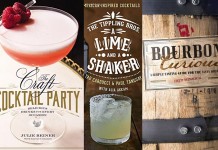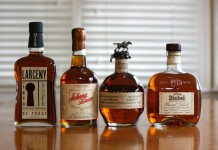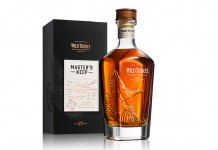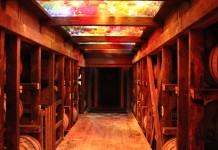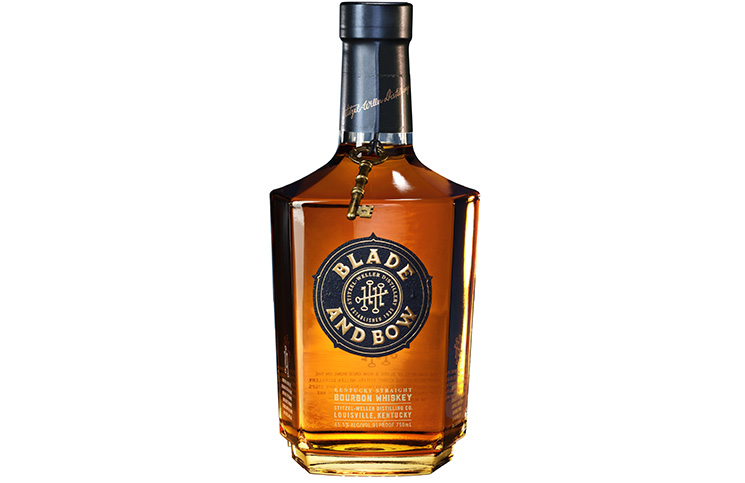
When it comes to American Whiskey, Diageo has been slightly nomadic in their approach. Diageo’s showcase American Whiskey brand, Bulleit Bourbon, is produced at the Four Roses Distillery in Lawrenceburg, Kentucky, while their Bulleit Rye is produced at Midwest Grain Products in Lawrenceburg, Indiana. This nomadic approach has extended to Diageo’s Orphan Barrel Whiskey, which brings together whiskeys from various sources under a single brand. Orphan Barrel was an interesting move for Diageo, which created an entirely new umbrella brand focused on a whiskey’s age and character rather than where it was produced.
Defocusing the source of the Orphan Barrel whiskeys seemed to ruffle a few feathers among whiskey enthusiasts, but bottles, especially of the 26 year Old Blowhard, flew off the shelves. Now, Diageo is in an interesting position. They’ve finally cleared the cobwebs from the legendary Stitzel-Weller distillery to make it a showcase for their American Whiskey products, including the new “Bulleit Bourbon Experience“.
Even though the aging rackhouses have been home to many of the whiskeys that Diageo turned to for their Orphan Barrel line, they’re shifting focus back to the core Stitzel-Weller brand as they begin their homestead at the distillery. The problem is that the whiskey that’s aging at Stitzel-Weller is a patchwork of barrels, produced across a number of different distilleries. What was an asset for Diageo for their Orphan Barrel brand now becomes a challenge as they try to develop a brand more closely associated with Stitzel-Weller.
Diageo’s solution is Blade and Bow Whiskey, a new brand of whiskey that brings together the core of whiskey produced at Stitzel-Weller along with the wide range of whiskeys that were aged there, but produced elsewhere. To accomplish this, Diageo uses a solera system to blend the native Stitzel-Weller stocks with these “other” whiskeys. Using solera to blend isn’t new in the spirits space: Hillrock Estate Distillery used it in their signature release to combine young craft whiskey with older merchant whiskey.
Blade and Bow Kentucky Straight Bourbon Whiskey (45.5% ABV, $50) – Golden brown in color, the nose has many of the signature characteristics of Stitzel-Weller whiskey including bright green apple, banana, cinnamon spice, and oak. While there’s no age statement on this Blade and Bow (and with the solera system, age statements get muddled), it’s clear from the strength of the oak on the nose that there are some older stocks in this whiskey. The aromas on the nose are fairly well integrated, and although it’s spicy, it’s far less fiery than we’d expect at this ABV.
The entry for Blade and Bow is light and a little thin, much lighter than expected. The green apple and banana from the nose are there, along with caramel and a flash of the oak spice from the nose. In the midpalate, the oak spice ramps up a bit and is joined by black pepper and cinnamon. The level of spice is fairly balanced and light. Underneath, the spice is the tart green apple note from the entry. As with the entry, the finish is shorter and lighter than expected. It’s slightly dry and tart with just a hint of that oak spice.
While there’s nothing really offensive about Blade and Bow Whiskey, it’s severely lacking in character. The apple and banana aromas on the nose are nice and they carry through the taste experience fairly well, but the flavors never really pop and the mouthfeel falls on the side of being too thin. At this ABV we’d expect more robust flavors and aromas, but the whiskey presents as a little dull.
At $25 a bottle, this light storied whiskey in a stunning package could merit a light recommendation, but priced at $50 a bottle, it’s hard to see what makes this whiskey so alluring (outside of its pedigree) to merit the price. 79 points

Blade and Bow 22-Year-Old Limited Release Kentucky Straight Bourbon Whiskey (46% ABV, $150) – As with the base Blade and Bow, this limited release is a blend of whiskeys from multiple sources which have been aged at Stitzel-Weller. Here, Diageo has gotten a little more savvy about disclosing the source of the whiskey – since they can’t say that it’s a blend of whiskey from Bernheim Distillery and Buffalo Trace, they say, “Inclusive of whiskeys distilled at both the distillery historically located at 17th and Breckinridge in Louisville, Ky. and the distillery historically located at 1001 Wilkinson Blvd. in Frankfort, Ky.,” (very sneaky, Diageo).
Dark brown in color, as you’d expect from a whiskey of this age, wood is the leading note from the nose, like old split wood. The nose isn’t singularly wood, though – in the core, it’s sweet cherry, marzipan, dried apricot, and vanilla. The entry for Blade and Bow 22-year is much lighter and thinner than expected. On the plus side, it’s not a slap across the face with wood, but as with the Blade and Bow core, it’s not popping with flavor, something expected at this ABV. Instead of an oak slam, the entry starts off with light vanilla, dried apricot, and a touch of oak.
The spice does build in the midpalate with black pepper and cinnamon, but it levels off quite quickly, turning more tannic and dry than spicy. The finish is very dry with cinnamon and oak spice along with some slightly tart and bitter tannins.
It’s interesting that Diageo would releases another 22 year old blend after releasing the 22 year old Orphan Barrel Lost Prophet only a few months back. It’s also interesting that this release would get a solid $30 bump in price over the Orphan Barrel release.
From a liquid perspective, it seems like the Diageo folks were trying to produce a Lost Prophet 2.0, balancing out some of the heavy oak notes and delivering a more integrated and approachable whiskey. The problem is, no matter what you do to it, you’re still dealing with whiskey that’s past its peak. While the oak in Lost Prophet was overbearing, it gave that whiskey some structure and character. Here the character has been homogenized, blended away, and the result is a whiskey that, while drinkable, is a bit dull. 79 points
Neither Blade and Bow nor Blade and Bow 22-year are particularly bad whiskeys, but both are clear examples of spirits that lack solid character. They are both light, with some modest flavor notes, soft and thin for the level of alcohol, and unoffensive. All of which would be fine at much lower price points, but these are being sold at quite a premium, and they just aren’t delivering on that promise.







